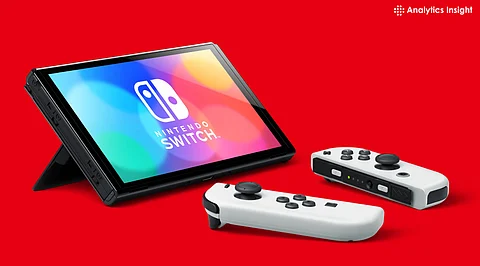

Adjusting HDR and brightness dramatically improves visuals
Choosing the right refresh rate enhances motion clarity
Game Mode and RGB settings boost color accuracy
Nintendo Switch 2 is rapidly becoming one of the strongest and most versatile gaming consoles currently out there. With enhanced graphics, 4K support, HDR, and faster refresh rates, it delivers a much-improved gaming experience.
But the factory settings may not provide optimal image quality. Often, images can appear too bright, too dim, or irregular. The good news is that a couple of simple tweaks can bring out the best in the system, whether it’s being played in handheld mode or via a 4K TV.
The display settings menu is one that’s frequently skipped during setup. However, it is responsible for setting up image sharpness, color range, and motion smoothness. By making a few simple adjustments, picture quality can be greatly enhanced, without a single piece of extra hardware.
Laid out below are seven display settings worth adjusting to maximize the potential of the Nintendo Switch 2.
HDR (High Dynamic Range) adds color and contrast, but in system-wide applications, it can warp visuals in non-HDR games or menus.
On System Settings, choose Display, then HDR Output, and toggle it to ‘Compatible Software Only.’ This will ensure HDR only for games built to utilize it, preserving color accuracy otherwise.
Within the HDR calibration screen, a hidden brightness setting is available. Pressing the Y button reveals a slider that can be adjusted for better visibility.
Increasing the brightness slightly, by four or five steps, can prevent images from appearing too dark or washed out, particularly in games with realistic lighting.
Also Read: Nintendo Switch 2 Review: Is New Camera & Pro Controller Worth the Upgrade?
Display performance depends on how the console is used:
In handheld mode, selecting 1080p at 120Hz provides smooth motion and responsive gameplay.
When docked, either 1440p at 120Hz or 4K at 60Hz can be selected based on what the connected television supports.
Higher refresh rates help reduce lag, while 4K offers a sharper, more detailed image, ideal for cinematic titles or story-driven games.
Both VRR (Variable Refresh Rate) and ALLM (Auto Low Latency Mode) are essential to newer displays:
ALLM provides zero input lag by switching off unwanted TV processing.
VRR prevents screen tearing by synchronizing the display’s refresh rate with the game’s frame rate.
These can be accessed under Display > Advanced Output Options. HDMI 2.1-supported TVs will provide the most visible improvement here.
Under Display Settings, the RGB Range setting governs the way color is delivered to the screen. Selecting Full Range (0–255) allows deeper blacks and more true highlights.
This setting should be used only if the TV also supports full-range RGB. Otherwise, using the Limited setting will prevent color distortion or bad contrast.
Enabling Game Mode on the TV reduces display lag by turning off extra image processing.
Turning off dynamic tone mapping or choosing HGIG (HDR Gaming Interest Group) mode lets the console control HDR output more effectively.
Then, recalibration of HDR in the console ensures lighting and contrast are optimally aligned with new tone mapping settings.
Used in handheld mode, Nintendo Switch 2 automatically adjusts screen brightness according to the surrounding light. Though beneficial outside, it can lead to brightness drops during dimmer indoor scenes.
Turning off this feature under Brightness Settings offers a more stable and clearer picture.
For users playing on a TV, setting Match TV Power State to enabled under Display Settings enables HDMI-CEC, which controls the TV turning on and off with the console. This minor adjustment enhances everyday convenience.
Getting a solid visual boost from Nintendo Switch 2 would still mean that there are umpteen things one has to tweak on it to get the machine working at the best level. Adjustments like HDR output, brightness, refresh rate, and display modes have an immense effect on gameplay.
Another plus about these options is that they are pretty easy to adjust; no extra gear is necessary. Just with a few smart changes, the whole experience gets richer, motion becomes slicker, and in some ways achieves immersion.
Also Read: 10 Must-Play Nintendo Switch 2 Games in 2025
